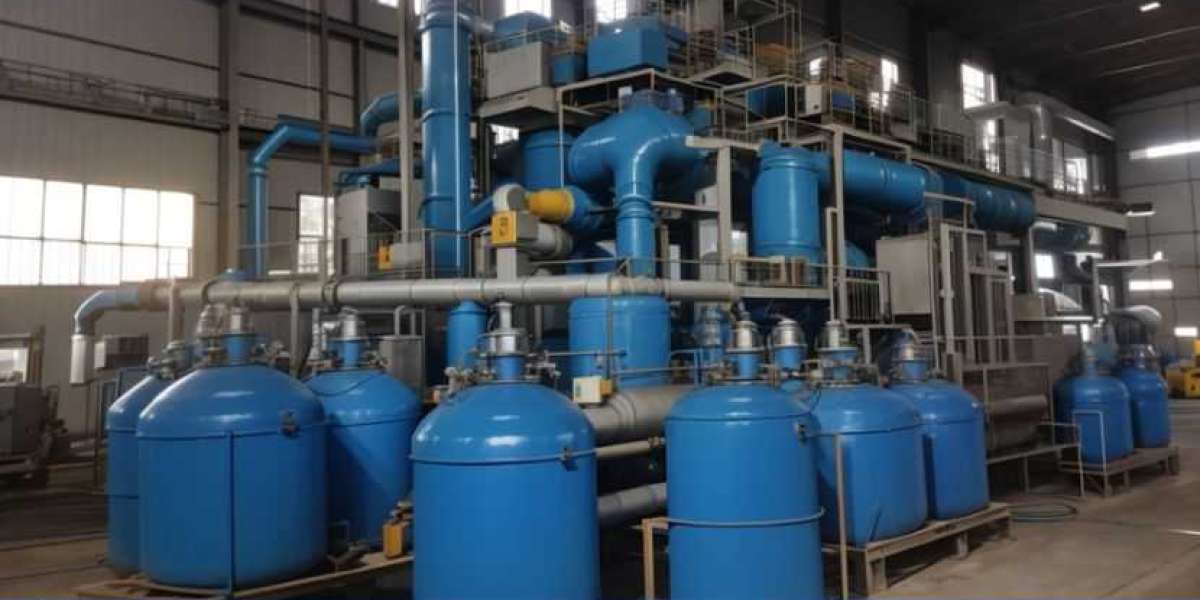Introduction
Zinc arsenate is an inorganic compound that serves various applications, primarily as a pesticide and fungicide in agriculture. It is valued for its effectiveness against a range of pests and plant diseases, making it a key component in crop protection. As agricultural practices evolve and the demand for sustainable farming solutions increases, establishing a manufacturing plant for zinc arsenate presents a viable business opportunity. This Zinc Arsenate Manufacturing Plant Project Report explores the critical aspects of setting up a zinc arsenate manufacturing facility, including market analysis, project feasibility, raw material sourcing, manufacturing processes, and financial projections.
Market Analysis
Demand and Supply
The market for zinc arsenate is primarily driven by its use in agricultural applications. Several factors contribute to the growing demand:
Increasing Agricultural Production: With the global population projected to reach 9.7 billion by 2050, the need for increased agricultural output is pressing. Zinc arsenate is an effective solution for pest control, promoting higher yields.
Sustainable Practices: There is a growing trend toward sustainable farming methods that use fewer synthetic chemicals. Zinc arsenate, when used judiciously, can be part of integrated pest management systems.
Rising Awareness of Crop Health: Farmers are increasingly aware of the impact of pests and diseases on crop health, leading to greater investment in effective pest control solutions.
Target Market
The primary target markets for zinc arsenate include:
- Agricultural Producers: Farmers and agricultural cooperatives seeking effective pest control solutions.
- Pesticide Manufacturers: Companies that produce and distribute agricultural chemicals.
- Research Institutions: Organizations engaged in agricultural research and development.
Competition
While the market for zinc arsenate has established players, there are opportunities for new entrants. Companies that can differentiate themselves through product quality, sustainability, and effective distribution strategies will find success in this niche market.
Get a Free Sample Report with Table of Contents @
Project Feasibility
Location
Choosing the right location for the manufacturing plant is crucial. Key factors to consider include:
- Proximity to Raw Material Suppliers: Being close to suppliers of zinc and arsenic compounds can reduce transportation costs and ensure timely delivery.
- Transportation Infrastructure: Good access to roads, railways, and ports is essential for efficient distribution of the finished product.
- Utility Availability: Reliable access to electricity and water is necessary for manufacturing operations.
- Environmental Regulations: Selecting a location that complies with local environmental regulations is essential for sustainable operations.
Technology
The production of zinc arsenate involves several technological considerations:
Synthesis Process: Zinc arsenate is synthesized through the reaction of zinc oxide with arsenic acid. This process requires careful control of temperature and reaction conditions to ensure product quality.
Purification Techniques: The crude product may require purification processes, such as filtration or crystallization, to achieve the desired purity.
Quality Control Systems: Implementing robust quality control measures is essential to ensure that the final product meets regulatory and safety standards.
Regulatory Compliance
Compliance with industry regulations is critical for the success of the manufacturing plant. This includes:
- Obtaining Necessary Licenses: Securing all required permits from local and international regulatory bodies.
- Good Manufacturing Practices (GMP): Adhering to GMP guidelines to ensure product quality and safety throughout the manufacturing process.
- Environmental Regulations: Implementing waste management and emission control measures to comply with environmental standards.
Raw Material Sourcing
The primary raw materials required for the production of zinc arsenate include:
- Zinc Oxide: A key raw material used in the synthesis of zinc arsenate.
- Arsenic Acid: Required for the chemical reaction to produce zinc arsenate.
- Other Chemicals: Depending on the synthesis route, additional reagents may be necessary for the production process.
Building strong relationships with reliable suppliers will ensure a consistent and high-quality supply of raw materials.
Manufacturing Process
Overview
The manufacturing process for zinc arsenate generally includes the following steps:
Raw Material Preparation: All necessary chemicals are prepared and tested for quality before the synthesis process.
Synthesis Reaction: Zinc oxide is reacted with arsenic acid under controlled conditions to form zinc arsenate.
Purification: The crude zinc arsenate is purified through filtration or crystallization to achieve the desired purity levels.
Quality Control: Rigorous testing is conducted at each stage of production to ensure compliance with industry standards for potency and purity.
Packaging: The final product is packaged in suitable containers to protect it during transportation and storage.
Quality Assurance
Implementing a robust quality assurance system is essential to maintain product integrity. Regular testing for purity, moisture content, and other quality parameters should be conducted to ensure compliance with customer specifications.
Financial Projections
Capital Investment
The initial capital investment for establishing a zinc arsenate manufacturing plant can vary widely, typically ranging from $2 million to $6 million. Factors influencing this range include plant size, technology used, and location.
Operating Costs
Key operating costs include:
- Raw Materials: Costs for zinc oxide and arsenic acid.
- Labor Costs: Salaries and wages for skilled employees.
- Utilities: Expenses for electricity and water.
- Maintenance: Regular maintenance costs for machinery and equipment.
- Marketing and Distribution: Costs associated with promoting and distributing the product.
Revenue Projections
With effective marketing strategies and a solid customer base, a zinc arsenate manufacturing plant can achieve a break-even point within 2-4 years. Profit margins typically range from 15% to 25%, depending on market conditions and operational efficiency.
FAQs
1. What is zinc arsenate used for?
Zinc arsenate is primarily used as a pesticide and fungicide in agriculture, effectively controlling pests and diseases in crops.
2. How is zinc arsenate manufactured?
Zinc arsenate is produced by reacting zinc oxide with arsenic acid under controlled conditions, followed by purification and packaging.
3. What are the primary raw materials for producing zinc arsenate?
The main raw materials include zinc oxide and arsenic acid, along with any additional chemicals required for the synthesis process.
4. What regulations must be adhered to in zinc arsenate manufacturing?
Manufacturers must comply with Good Manufacturing Practices (GMP), obtain necessary licenses, and meet environmental regulations to ensure product quality and safety.
5. What are the financial risks associated with starting a zinc arsenate manufacturing plant?
Key risks include fluctuations in raw material prices, regulatory compliance costs, and competition in the agricultural chemicals market. Conducting thorough market research and financial forecasting can help mitigate these risks.
Related Reports
https://www.expertmarketresearch.com/reports/north-america-customer-journey-analytics-market
https://www.expertmarketresearch.com/reports/flexible-plastic-packaging-market
https://www.expertmarketresearch.com/reports/instrument-transformer-market
Media Contact:
Company Name: Claight Corporation
Contact Person: Lewis Fernandas, Corporate Sales Specialist — U.S.A.
Email: sales@expertmarketresearch.com
Toll Free Number: +1–415–325–5166 | +44–702–402–5790
Address: 30 North Gould Street, Sheridan, WY 82801, USA
Website: www.expertmarketresearch.com
Aus Site: https://www.expertmarketresearch.com.au














